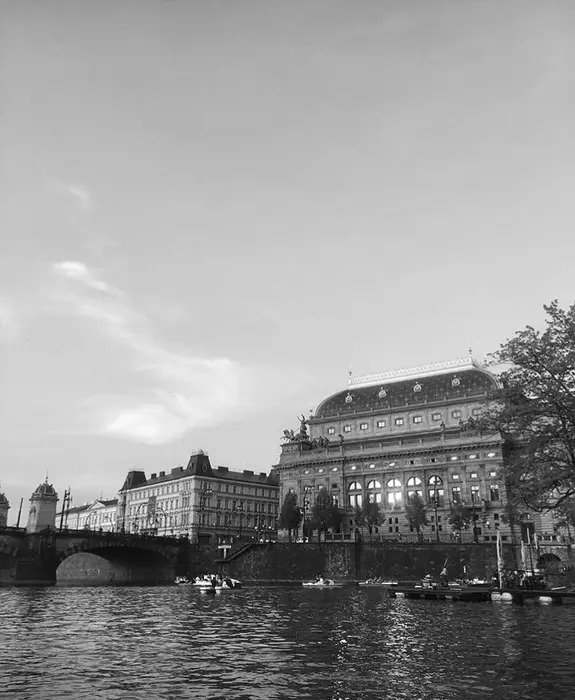Today I will tell you something about the National Theater and its history. Normally, I wouldn't come up with this topic, but I recently received tickets for the Manon Lescaut theater play that took place here. The performance I attended, unfortunately, does not play in the English version. But there are many other performances that are directly for English-speakers. I've seen the premises of the National Theater many times but it always surprises me. Majesty and detail.
National Theater is, of course, one of the dominants of Prague, at the same time it is a symbol of the cohesion of the Czech nation at the time of the national revival. At this time, the first idea for building a theater was created, in which it could be passed on to Czech citizens and to other generations. That's why František Palacký, the father of the nation, applied for the construction of the theater and in just 4 months everything was approved and the theater started to be built.
The pre-theater of the National Theater was the Temporary Theater (,,Prozatimní"). After the opening of the National Theater, this theater was connected in one building. The construction of the National Theater was a project of the Czech architect Josef Zítek and had three main stages. The first was laying the foundation stone in 1868. Or should I write stones? It was not just a stone, but many stones from the major Czech mountains, such as Říp or Radhošť. Laying the first stone was a great event attended by a large number of people. At the same time, the premiere of the Dalibor opera was performed by the Czech composer Bedřich Smetana. The construction then continued at Žofín.
The decoration of the National Theater was thematically neo-renaissance, while the authors were also inspired by Slavonic mythology. The main authors, which we call the generation of the national theater, were František Ženíšek, Mikoláš Aleš, Bohuslav Schnirch, Josef Václav Myslbek, and others. In June 1881 the National Theater was opened for the first time. Again the opera from Bedřich Smetana, Libuše, was performed.
As many of you already know, in less than two months there has been a major fire at the National Theater that destroyed much of the building. For example, the magnificent curtain of František Ženíšek and the stage were destroyed. The building was led by architect Josef Schultz. The repairs were extensive. Reinforced grilles, windows, doors, balloons, trays. Also, the entire building had to be cleaned. At that time the reconstruction was costly and time-consuming. A large part of the Czech nation donated for the National Theatre to be repaired.
I would like to describe today's decoration starting from the curtain. The curtain consists of three pieces. The iron and fire curtain was installed there as a protection in case of another fire. The second curtain was painted by Vojtěch Hynais. The third is velvety, red and stretches by hand. "Národ sobě" text is written above the curtains, which means "The nation is together". This text along with the second curtain serves as a thank you to the people who have contributed to the reconstruction of the theater. There are other great elements in the theater - organs and busts of the famous. The ceiling is decorated with a chandelier and 3 wall paintings depicting the golden age, decay, and resurrection. In the foyer, you can see paintings by František Ženíšek and Mikoláš Aleš.
Today, the New Stage is also part of the National Theater, which was built during the reconstruction. "Stavovské Divadlo" theater and the State Opera. The National Theater ensembles are divided into Drama, Opera, Ballet and Laterna Magika.
From our external collaborator Tereza Kultová